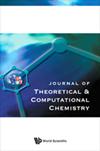儿茶素和表儿茶素。哪种反应性更强?
IF 2.4
Q3 Computer Science
引用次数: 3
摘要
儿茶素和表儿茶素是两种异构体黄酮类化合物。尽管许多科学研究强调了这些重要的性质,但关于这些化合物的内在反应性的数据很少。为了更详细地了解儿茶素和表儿茶素的稳定性和反应性,本研究采用理论计算方法进行。为此,在B3LYP/6-31 + G (d, p)理论水平上进行了几何优化和频率计算,并进行了自然键轨道(NBO)分析和VEDA(振动能量分布分析)。几何参数和能量参数以及NBO分析表明,儿茶素比表儿茶素更稳定。儿茶酚结构C环上羟基的位置是影响这种相对稳定性的一个因素。整体和局部反应性参数显示表儿茶素比儿茶素更具反应性。它们表示它们的羟基对应于它们最容易接受的位置。Fukui指数、VEDA和酸度研究表明,O28-H29仍然是最具活性的。本文章由计算机程序翻译,如有差异,请以英文原文为准。
Catechin and Epicatechin. What’s the More Reactive?
Catechin and epicatechin are two isomeric flavonoids. Despite the vital properties highlighted by numerous scientific studies, very little data is available on the intrinsic reactivity of these compounds. To provide more details on the stability and reactivity of catechin and epicatechin, this study is performed by means of theoretical calculation methods. For this purpose, geometry optimizations and frequency calculations at the B3LYP/6-31 + G (d, p) level of theory has been carried out and Natural Bond Orbital (NBO) analysis and VEDA (Vibrational Energy Distribution Analysis). The geometric and energy parameters and NBO analysis show that catechin appears more stable than epicatechin. The hydroxyl group position on the ring C of the catechol structure represents a factor that influences this relative stability. The global and local reactivity parameters reveal that epicatechin becomes more reactive than catechin. They indicate that their hydroxyl groups correspond to their most receptive sites. Fukui indices, VEDA and acidity study establish that O28–H29 remains the most reactive.
求助全文
通过发布文献求助,成功后即可免费获取论文全文。
去求助
来源期刊
CiteScore
1.70
自引率
0.00%
发文量
0
审稿时长
3 months
期刊介绍:
The Journal of Theoretical and Computational Chemistry (JTCC) is an international interdisciplinary journal aimed at providing comprehensive coverage on the latest developments and applications of research in the ever-expanding field of theoretical and computational chemistry.
JTCC publishes regular articles and reviews on new methodology, software, web server and database developments. The applications of existing theoretical and computational methods which produce significant new insights into important problems are also welcomed. Papers reporting joint computational and experimental investigations are encouraged. The journal will not consider manuscripts reporting straightforward calculations of the properties of molecules with existing software packages without addressing a significant scientific problem.
Areas covered by the journal include molecular dynamics, computer-aided molecular design, modeling effects of mutation on stability and dynamics of macromolecules, quantum mechanics, statistical mechanics and other related topics.

 求助内容:
求助内容: 应助结果提醒方式:
应助结果提醒方式:


